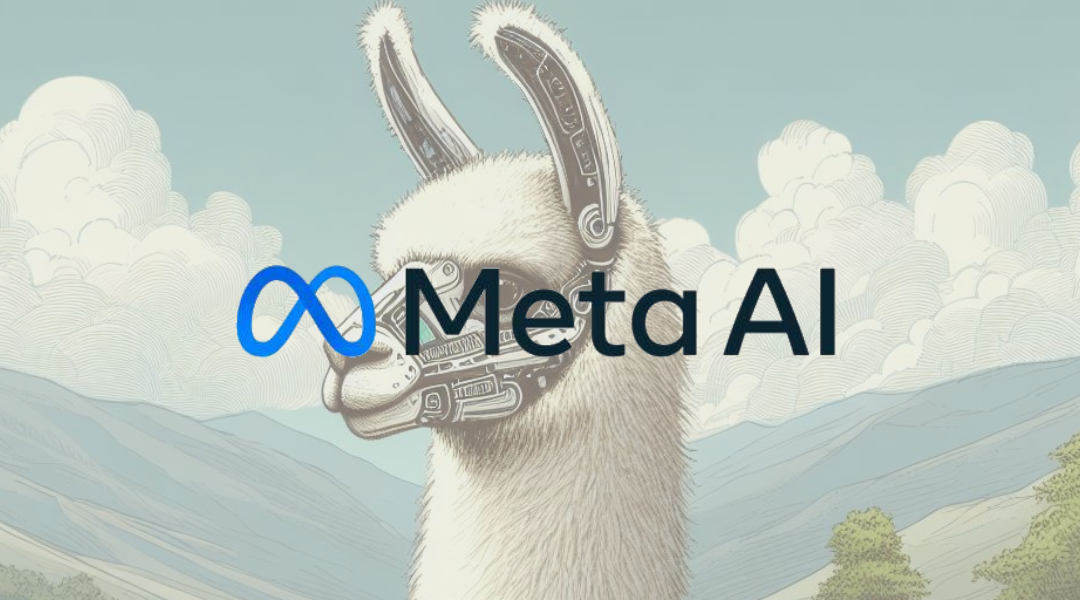In the digital age we live in, artificial intelligence (AI) continues to permeate various aspects of our lives and revolutionize the way we interact with technology.
In this context, the development of AIs has acquired crucial importance, especially due to the most recent milestone in the field of AI: the launch of LLaMa, the new artificial intelligence language model developed by Meta.
LLaMa represents a significant advance in the evolution of language models, and its impact promises to be profound and transformative across multiple sectors and disciplines.
But is this AI as effective as it claims to be? Find out in detail what LLaMa is, how it works and what its relevance is in the current landscape of artificial intelligence.
What is LLaMa and how does it arise?
LLaMa, an acronym for Large Language Model Meta AI, is an innovative artificial intelligence language model developed by Meta, the parent company of Facebook, WhatsApp, and Instagram.
It arises as a response to the demand for more accessible and versatile language models in AI. With a view to democratizing access to technology, Meta set out to create a model that could be used by researchers and developers around the world.
LLaMa is distinguished by its ability to adapt to different specific use cases, as well as its focus on public data, making it more accessible and less expensive to operate compared to other larger and more complex language models.
The development of LLaMa marks a significant milestone in the evolution of AI, by providing a powerful and accessible tool, with the potential to drive advances in different fields.
LLaMa Development and Operation
This language model operates through a recursive text generation approach, using a sequence of text as input to predict the next word. This process is repeated iteratively, allowing LLaMa to generate coherent text based on context.
The development of LLaMa involves extensive training in which the model is fed textual data in several languages. Meta has placed emphasis on including texts in the 20 most spoken languages, prioritizing those with Latin and Cyrillic alphabets.
This comprehensive training allows LLaMa to gain a deep understanding of language and its nuances, allowing you to generate accurate and contextually appropriate responses.
Its ability to be retrained and tuned for specific use cases makes it ideal for a wide range of applications in academic and industrial research.
Key features of LLaMa
LLaMa, the language model developed by Meta, has a number of key features that set it apart in the field of artificial intelligence:
- Size and Capacity Parameters: LLaMa stands out for its impressive size, with models ranging from 7 billion to 65 billion parameters. This capability allows the model to capture a deep and detailed understanding of natural language.
- Multilingual Training: This linguistic diversity gives LLaMa significant versatility, allowing it to be applied in a wide range of contexts and applications.
- Recursive text generation: LLaMa operates through a recursive text generation approach, where it uses a sequence of words as input to predict the next word.
- Flexibility and adaptability: This flexibility makes it ideal for researchers and developers looking to tailor the model to their particular needs, whether in academia or industry.
- Based on Public Data: Unlike other language models that rely on private data, LLaMa is based on public data. This not only makes it more accessible, but also positions it as a more transparent and ethical tool in the field of AI.
Key Applications of LLaMa
LLaMa, with its impressive capacity and versatility, has a wide range of potential applications in various fields:
Creative Content Generation
LLaMa can be used to generate creative content in various formats, such as articles, short stories, poems, music, and more.
Her ability to understand and generate coherent and relevant text makes her ideal for inspiring and supporting human creativity in different creative industries.
Virtual Assistance and Chatbots
LLaMa can be implemented in virtual assistance systems and chatbots to provide contextual and accurate answers to user queries.
This could be useful in customer services, online education, technical assistance, and other areas where simulated human interaction is required.
Data analysis and reporting
LLaMa can aid in data analysis by generating automatic reports, text summaries, and sentiment analysis.
Its ability to process large amounts of information and generate coherent text can streamline the data analysis process and help organizations make informed decisions.
Machine translation and multilingual content generation
With its training in multiple languages, LLaMa can be used for machine translation and multilingual content generation.
This can be invaluable in international communications, global content development, and creating accessible applications and services in multiple languages.
Academic and scientific research
LLaMa can be a valuable tool for researchers in various fields, including linguistics, social sciences, natural sciences, medicine, and more.
Its ability to generate coherent and contextually relevant text can aid in article writing, idea exploration, and hypothesis generation.
Development of productivity tools
LLaMa can be used to develop productivity tools, such as smart spell checkers, automatic summary generators, code completers, and more.
Their ability to understand context and generate relevant text can improve the efficiency and quality of human work in a variety of settings.
Getting to know this new model
LLaMa represents a significant breakthrough in the field of artificial intelligence, offering a powerful and versatile language model developed by Meta.
Although its current availability is limited and not available for widespread use, it is still an interesting and promising tool in the field of AI.
With its ability to adapt to different use cases, its multi-language training, and its focus on public data, LLaMa has the potential to drive significant advancements across a variety of industries and disciplines.
As its development continues and its application is explored in different contexts, it will be exciting to see how LLaMa contributes to the evolution and expansion of the field of artificial intelligence.
This post is also available in: Español Français Русский Italiano
